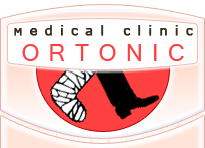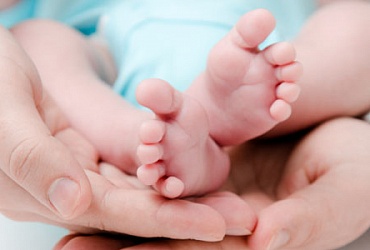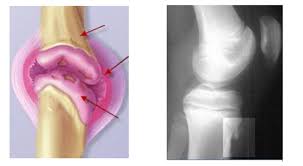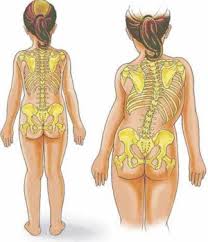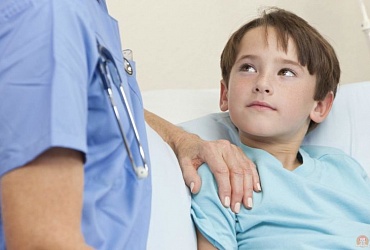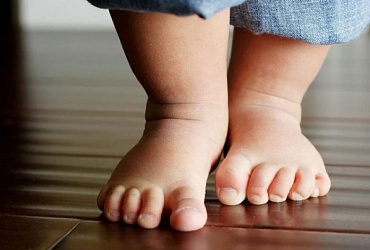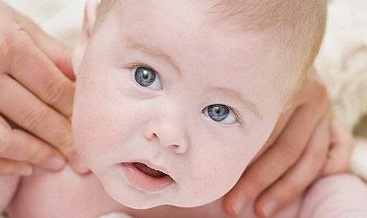Clubfoot
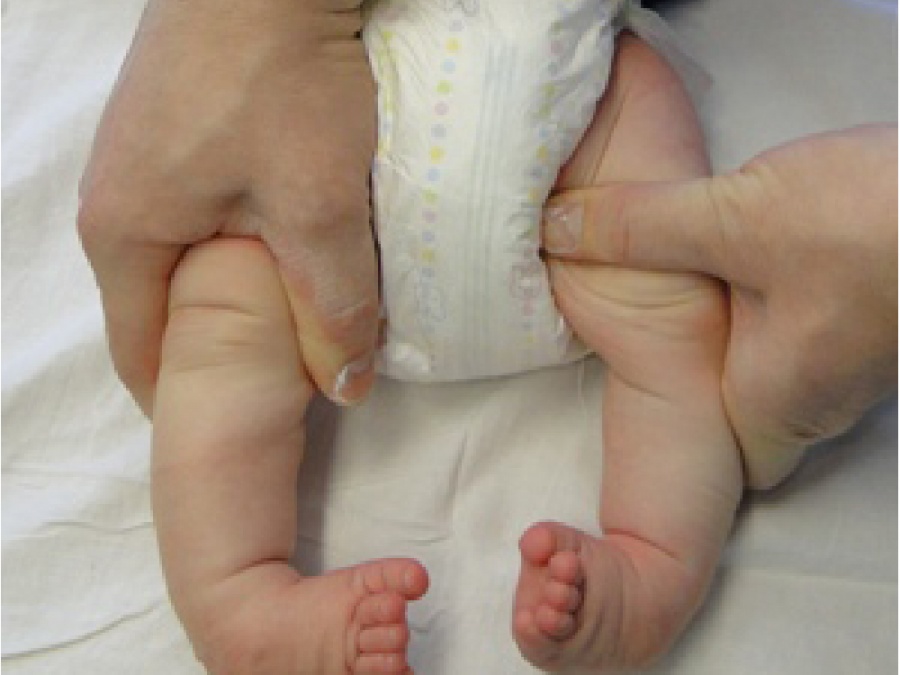
There are congenital and acquired clubfoot. Congenital clubfoot can be one of the signs of both systemic diseases and dysplasia of the skeleton - arthrogryposis, dysostosis, osteochondrodysplasia, and developmental anomalies, for example, longitudinal ectromelia. It can be one- and two-sided. Congenital clubfoot as an independent disease refers to the often occurring deformities. Usually it is detected at birth and further progresses. A congenital contracture of the joints of the foot is revealed, which is manifested by plantar flexion in the ankle (equinus), omission of the outer edge of the foot (supination) and reduction of the anterior part of the foot (by adduction). With a pronounced club foot, the foot is turned inwards, its outer edge is turned downwards and backwards, and the inner concave edge is upward. The back surface of the foot is turned forward and down, and the plantar surface is back and up. Supination of the foot is so significant that the heel can touch the inner surface of the shin. In addition to these symptoms, with congenital clubfoot, twisting of the shins of the shins outside (torsion), transverse inflection of the sole (inflection) is often observed, which is accompanied by the formation of a transverse furrow (the Adams furrow) running along the inner edge of the middle part of the foot and varus deformities of the toes. Depending on the fixed joint contractures of the foot, the foot is distinguished with a light degree of clubfoot (movements in the ankle joint are preserved, and the deformation can be passively corrected); clubfoot of medium severity (movements are limited, and partial correction is possible); heavy clubfoot (passive correction is not possible). Regardless of the degree of deformation, the form and function of not only the foot, but the entire lower limb, are violated. There is a delay in ossification of the foot bones. Treatment of clubfoot
Treatment of congenital clubfoot is performed by an orthopedist on an outpatient basis. In some cases, with severe deformities, children are hospitalized in orthopedic hospitals or sanatoriums. The main in the elimination of congenital clubfoot is a complex of conservative measures, including correction of deformation and retention of the achieved correction. The success of conservative treatment depends both on the degree of severity of the deformation, and on the timeliness, correctness and rationality of the stages of the treatment.
The most effective is the technique of early functional flow, which includes directional (active-passive) exposure to certain muscle groups to correct deformation in the cast; application of tutors from polymeric materials fixing the lower limb and allowing to include in the complex of medical measures physiotherapy, therapeutic gymnastics, massage and physical exercises in water. Treatment begins with the first days of the child's life. The repressions are performed cautiously. The stop is fixed in the position of the correction achieved with the help of gradual gypsum dressings with a special wedge-shaped gasket. To prevent the recurrence of deformities, appoint orthopedic shoes, therapeutic gymnastics and massage. In the first year after the end of treatment the child is examined every 2-3 months, then at least once a year until the end of growth (until 18-21 years). With ineffectiveness of conservative treatment of congenital clubfoot or its late diagnosis, surgery is performed on the tendon-ligament apparatus (in early childhood). At an older age, interventions on the bones and joints of the foot are necessary. The classic method of eliminating clubfoot is the operation on soft tissues according to TS Zatsepin. In this operation, the tendons of the posterior tibial muscle, the common flexor of the fingers and the flexor of the first toe of the foot, as well as the Achilles tendon, are extended from the two incisions (on the back and inner surfaces of the shin and foot). With a heavy degree of clubfoot, the bag-and-ligament apparatus is cut through the back and inner surface of the ankle joint and the plantar aponeurosis is dissected along the inner edge of the foot between the talus and navicular bones, the scaphoid and I wedge-shaped. After the operation, impose a gypsum circular bandage on the whole leg and foot in the position of full correction of the latter. Fixation lasts for 4-6 months with the change of bandages every 2 weeks. Assign orthopedic shoes for 1,5-2 years.
To eliminate congenital clubfoot, distraction-compression apparatuses are also successfully used (Volkova-Oganesyana, Ilizarova). In combination with orthopedic treatment, massage and gymnastics still play a leading role.
Therapeutic gymnastics is conducted in a sparing mode, aimed at correcting the pathological position of the foot, all exercises are carried out gently so that the child does not feel pain.
The gymnastics complex includes the following exercises:
- One hand fixes the shin, the other makes the rotational movements of the foot outward (left clockwise, right against), movements are done very carefully, without causing painful sensations in the child.
- Fix the ankle joint and gently produce rectifying movements, diverting the forefoot to the outside.
- To eliminate congenital clubfoot, distraction-compression apparatuses are also successfully used (Volkova-Oganesyana, Ilizarova). In combination with orthopedic treatment, massage and gymnastics still play a leading role.
Therapeutic gymnastics is conducted in a sparing mode, aimed at correcting the pathological position of the foot, all exercises are carried out gently so that the child does not feel pain. The gymnastics complex includes the following exercises:
One hand fixes the shin, the other makes the rotational movements of the foot outward (left clockwise, right against), movements are done very carefully, without causing painful sensations in the child.
Fix the ankle joint and gently produce rectifying movements, diverting the forefoot to the outside.
To stretch the calcaneal tendon and eliminate the plantar flexion of the foot, the following exercise is performed: the child lies on the back, with one hand fix the shin of the child in the ankle region (the right leg with the left hand and vice versa), the other should be seized by the foot so that the palm rests against the sole, and gently bends foot in the rear with pressure on its outer edge.
Massage is carried out according to a special method: with one hand fix the shin of the child (with the right hand massage the right leg, the left one), with the other hand (pads of the fingers) along the outer and the front surface of the shin and foot, where the muscles are weak and stretched, perform a tonic massage in a fast, tempo, thereby strengthening them, apply rubbing (increases the contractile function of muscles, increases their tone), kneading (improves the mobility of tendons and ligaments, improves blood circulation, not only at the massage site, but also at nearby their sites). For the inner and back surfaces, where the muscle tonus is on the contrary, a relaxing massage with stroking is done (increases the vital functions of the deep layers of the skin, has an analgesic effect), light vibration, shaking. Mandatory stretching of the muscles along the inner edge of the foot for 2-3 minutes.
When girding the shin, avoid pressing on the front surface of the tibia; it is not protected by muscles, it can cause painful sensations in the child.
Against the background of therapeutic massage and gymnastics, a restorative massage corresponding to the age of the child is also done.
Massage and gymnastics are recommended for 15 sessions, once a month, until complete recovery.
Clubfoot is a deformity of the foot, characterized by its deviation inward from the longitudinal axis of the shin.
